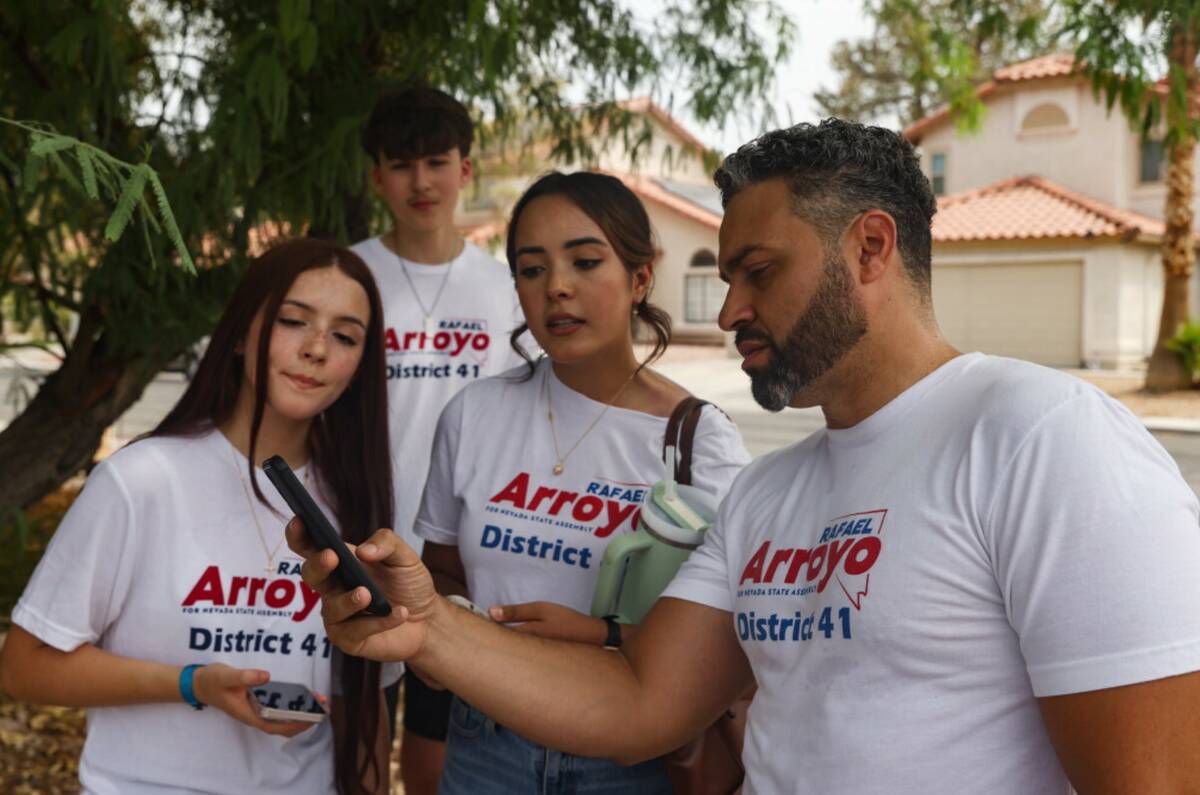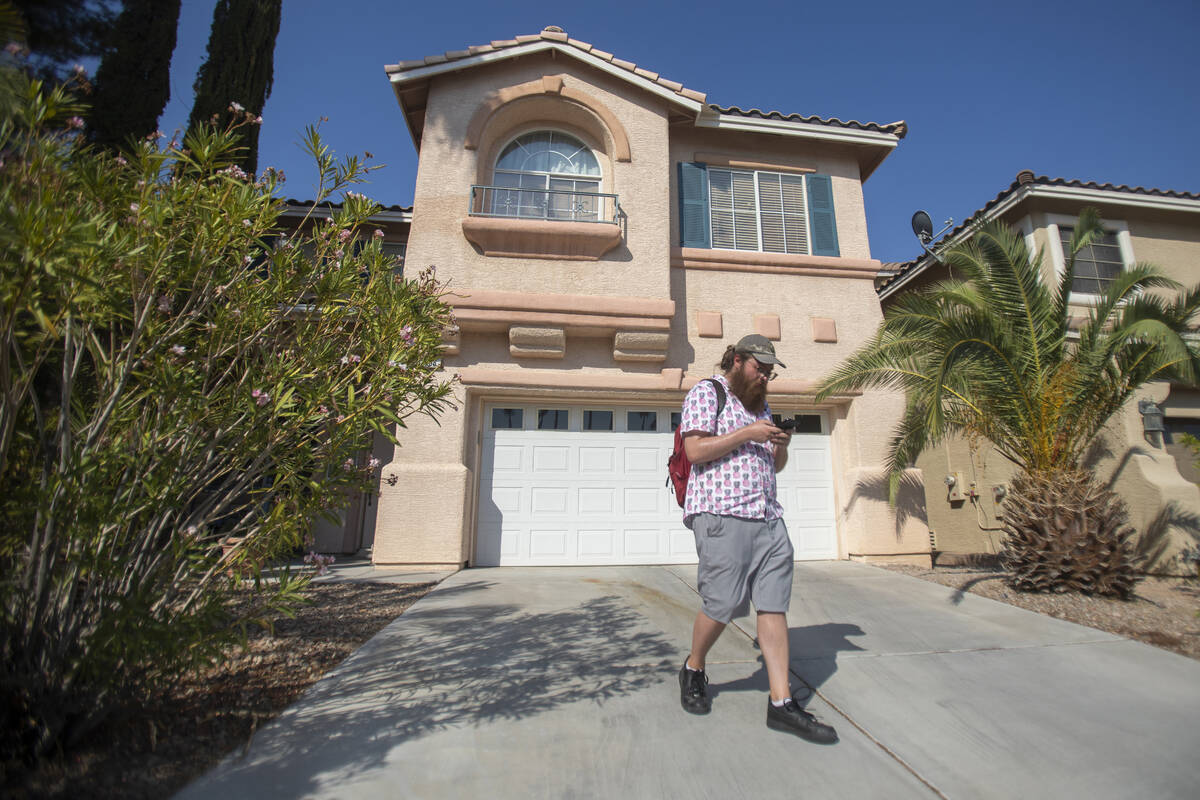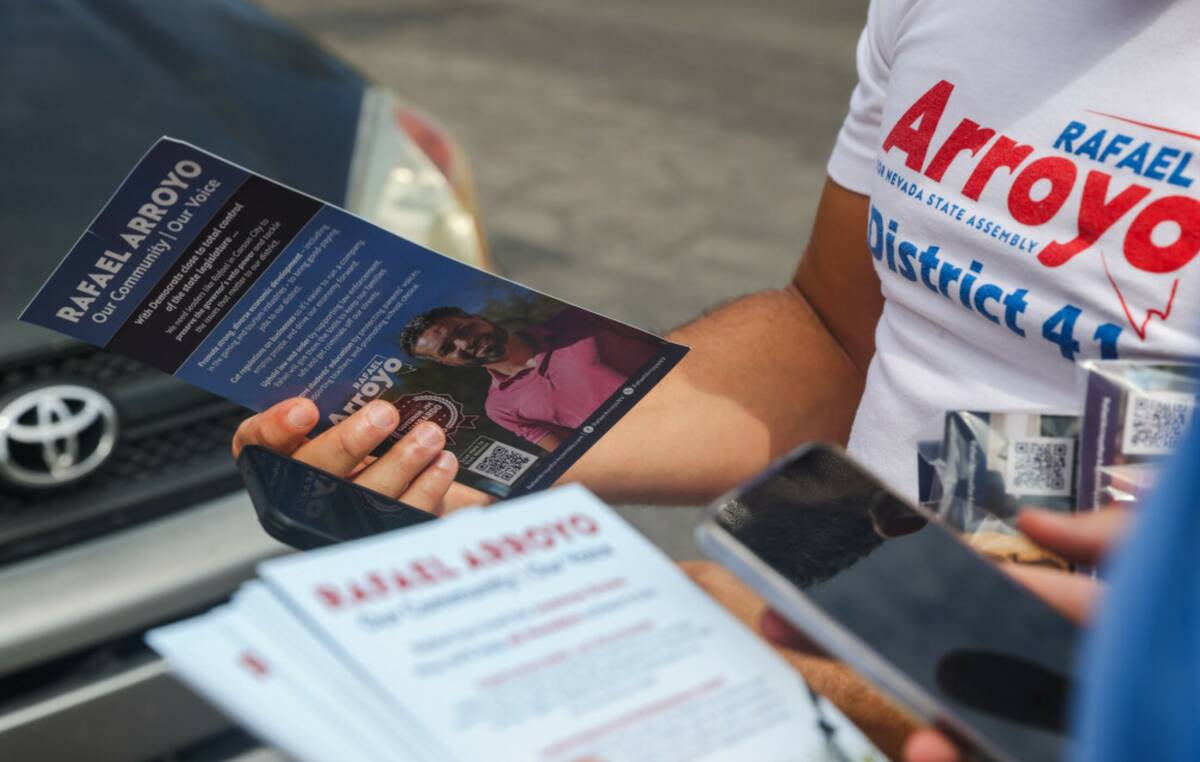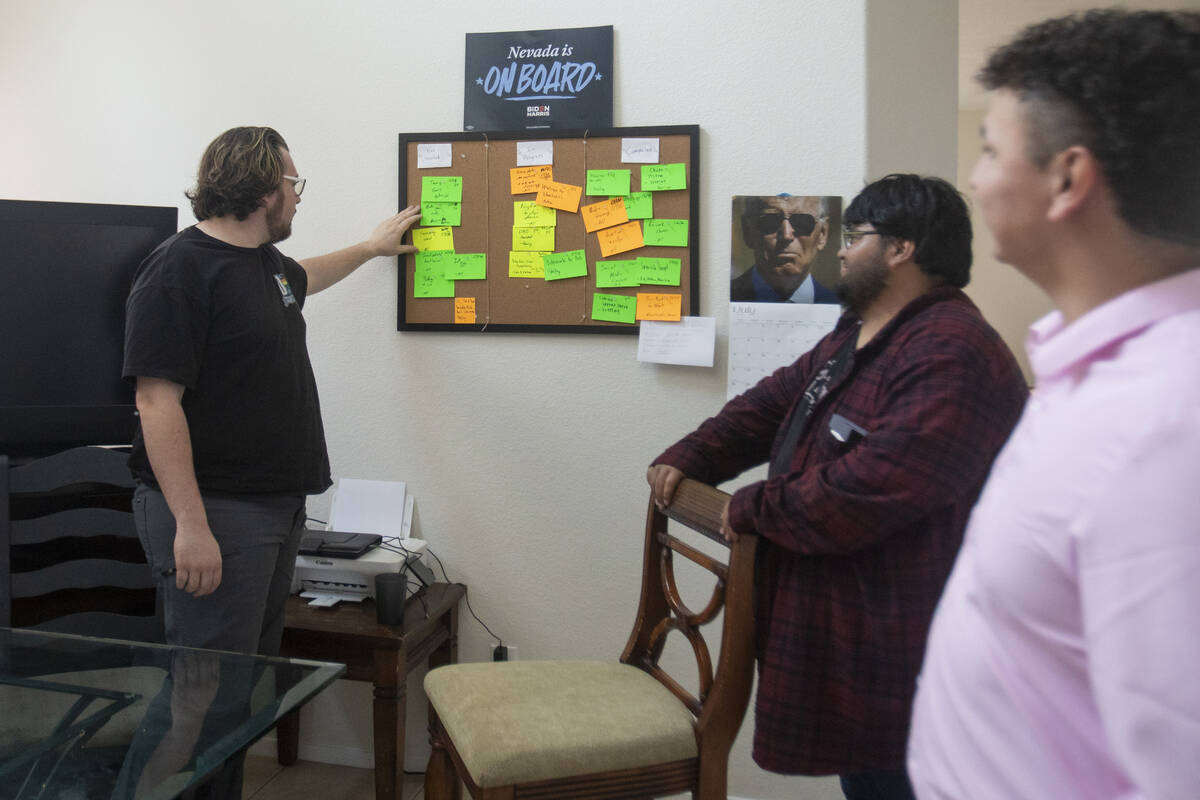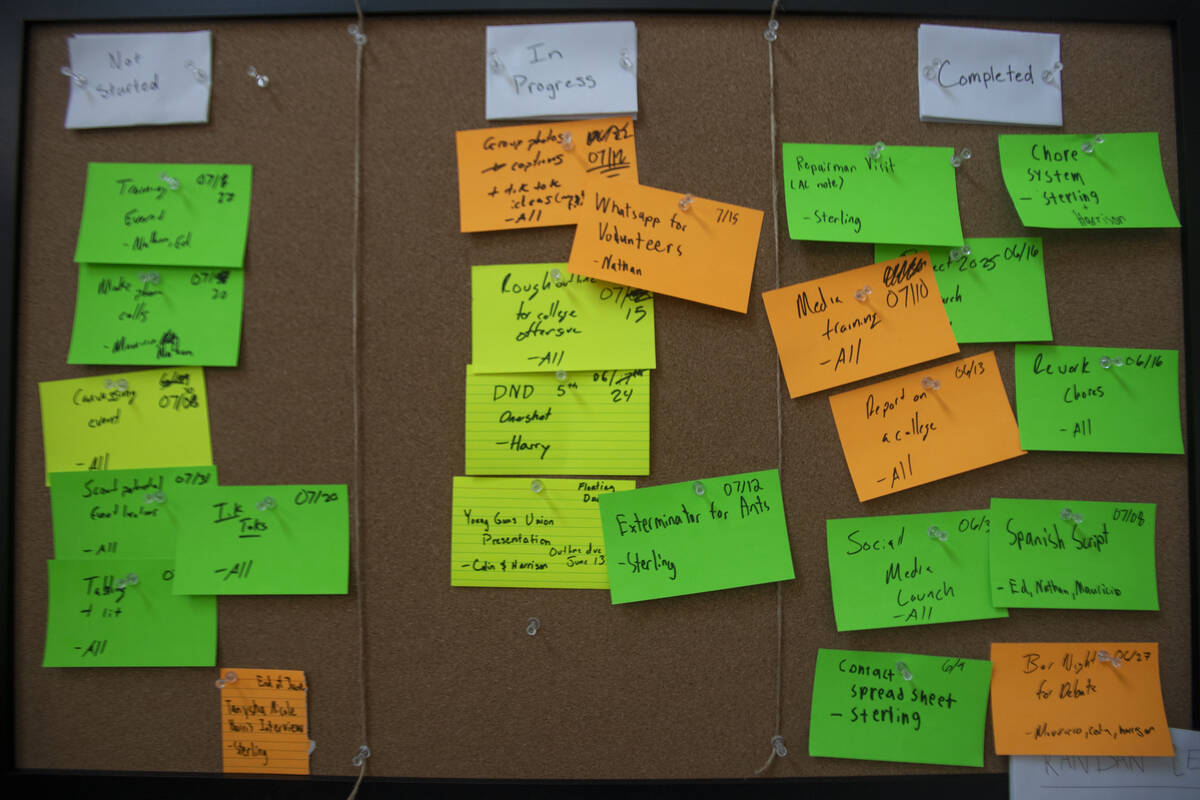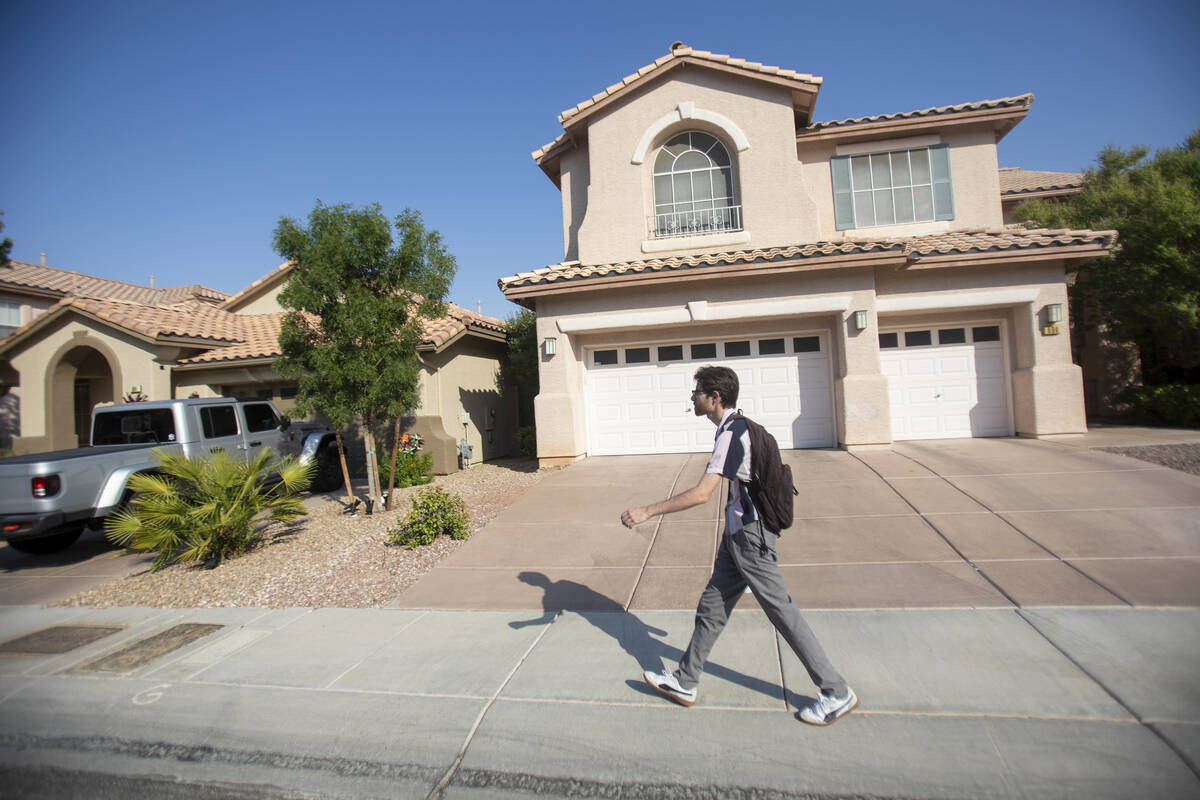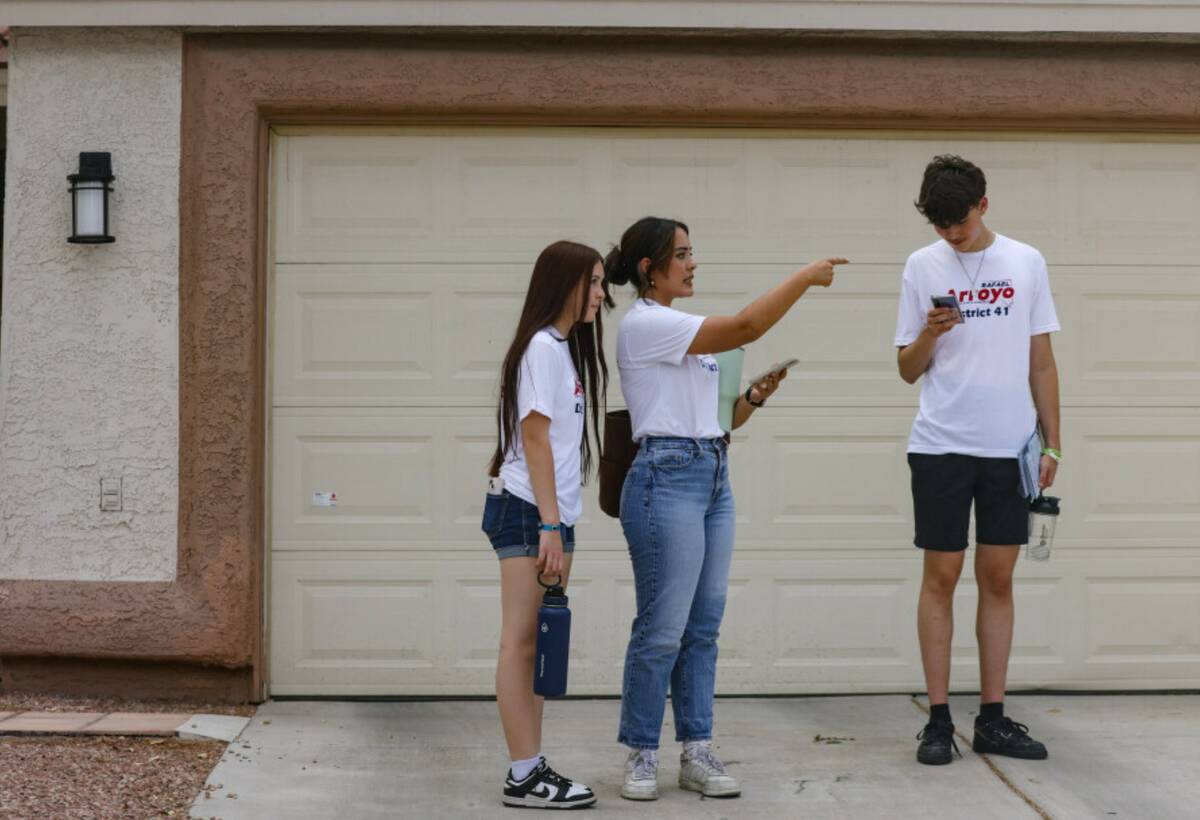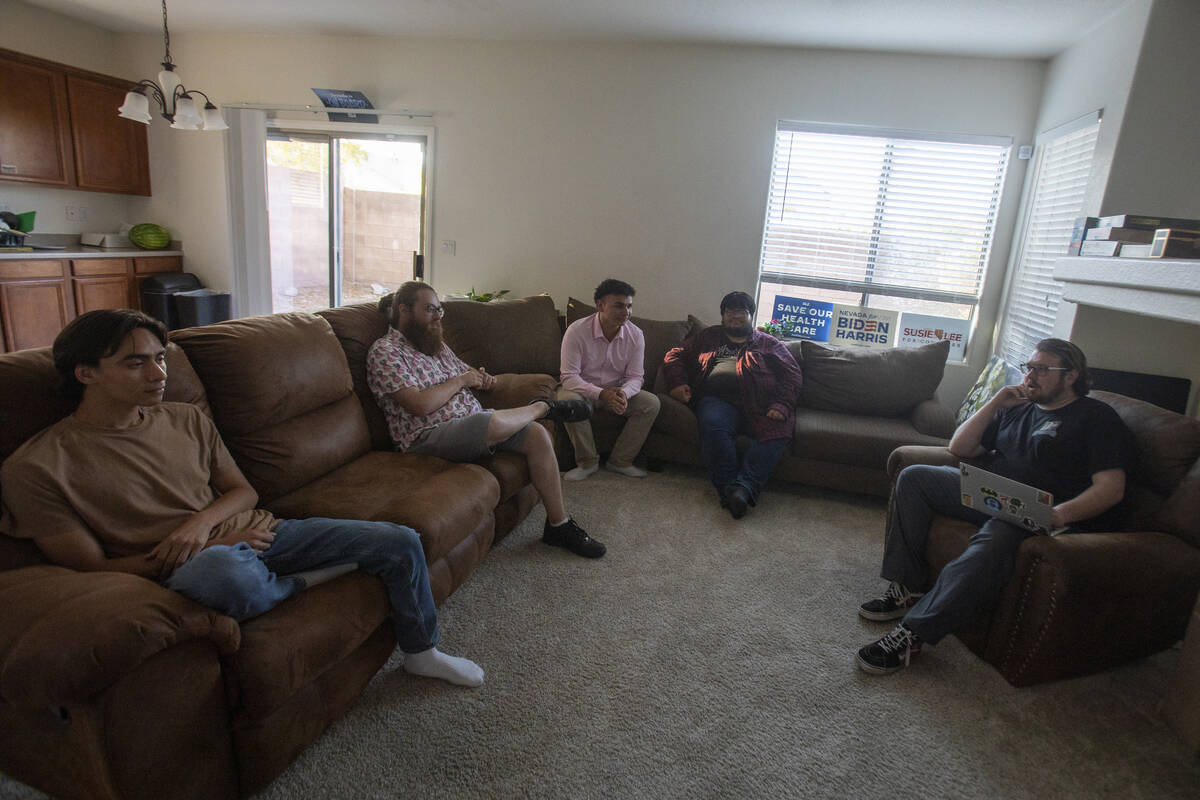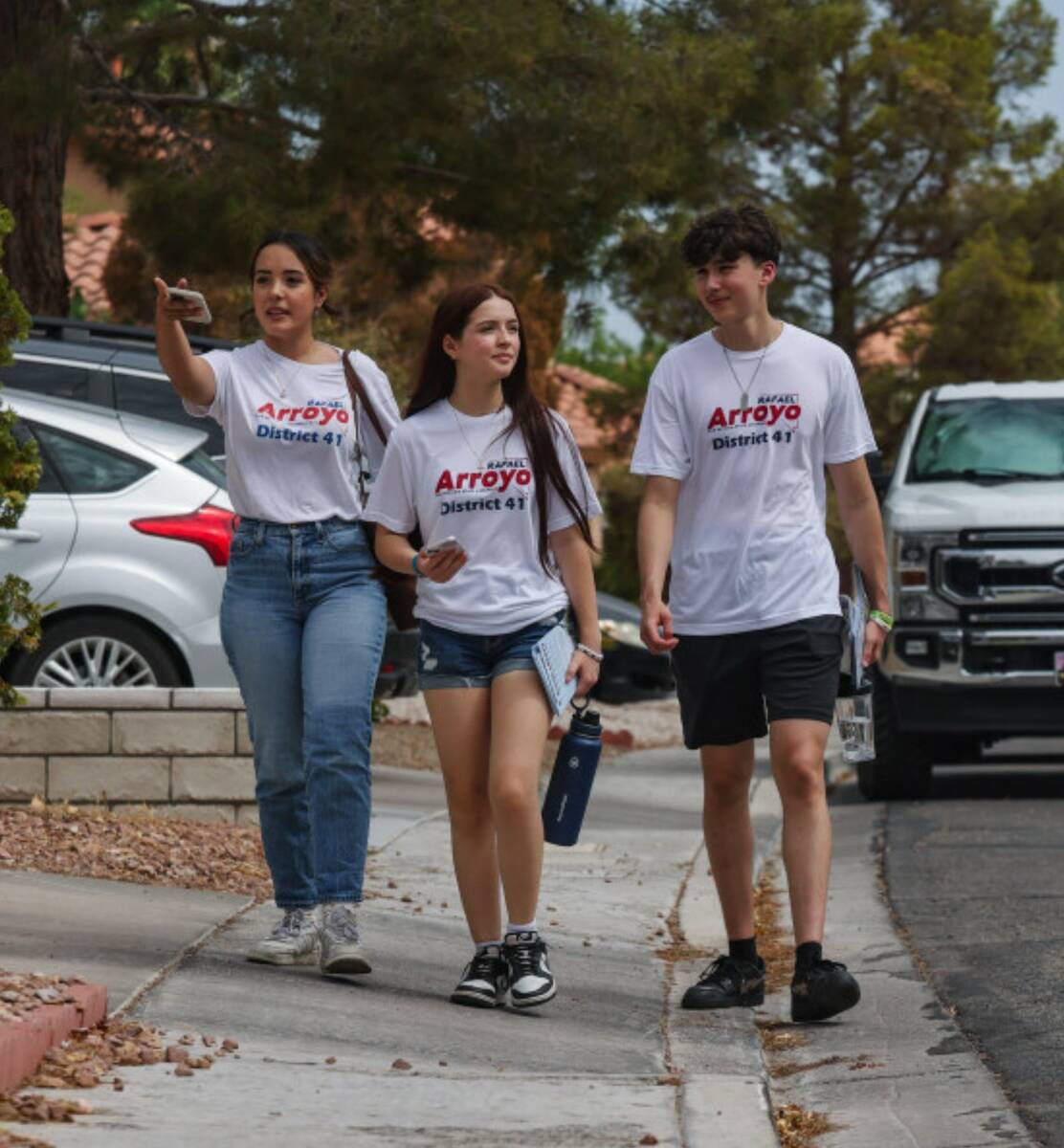Does door knocking work with young voters? Young political organizers are divided
A Californian knocked on the door of a Summerlin house and was met with no answer.
“Normally I wait about a minute,” the 24-year-old said. He’d been out canvassing for hours under the searing Las Vegas sun.
Sterling Raiklen is one of seven men in their 20s who uprooted from a different state and moved to Nevada after seeing an advertisement for a political volunteer role online.
Now, they all live together in a North Las Vegas home that they call the “Nevada House.” They belong to the organization Progressive Victory, a political community built “by the internet, for the internet,” according to the group’s website.
As the housemates went door-to-door, they were hoping to reach young voters to get a sense of where their heads are at, Raiklen explained in between door knocks.
But while experts say that studies show traditional canvassing to be the most impactful way to reach voters, some young organizers feel that knocking on doors won’t effectively reach young people in the same way that online interactions can.
Online and offline engagement
While research on the best way of reaching voters hasn’t quite kept up with the rise of social media, explained Kenneth Miller, assistant professor of political science at the UNLV, the findings “speak to an essential truth that having a conversation with someone is going to be more impactful.”
However, concerns about safety and the importance of meeting young people where they are — online — have led the members of the Youth Voice of Nevada to turn their attention away from canvassing efforts.
“Everybody has a screen with access to the internet,” said Drake York, 22, president of the Youth Voice of Nevada. “Social media is more effective.”
York also feels that young people in today’s day and age may not want to answer the door to a stranger. “People are wary nowadays,” he said.
But Rafael Arroyo, the Republican candidate for Nevada State Assembly District 41, said it’s important to him to have his young volunteers out knocking on doors in order to have conversations that can’t be replicated any other way.
Importance of human connection
Zoe Babcock, 17, said she has a lot of experience going door-to-door, both for nonprofits she has worked for in the past and as lead intern for Arroyo’s campaign.
She feels that connecting with young people online “can be a bit more productive,” she said, “because you can talk to a lot of people a lot faster.”
But Babcock acknowledged that a lot of people don’t read mass texts that are sent out through text banking efforts.
“It doesn’t hit the same as speaking to them face to face,” she said.
On a hot, overcast day in August, Babcock was out canvassing with her 14-year-old little sister, fellow volunteer Max Maroe, 18, and Arroyo.
Maroe encountered Babcock while running a booth for his hot sauce brand. When she mentioned she was knocking on doors a few days later, Maroe decided to join.
“This is new, but I mean, I’m used to speaking to people,” he said.
At the first house the group approached, a retired man answered the door. He was familiar with Arroyo and had voted for him in the primary election after another canvassing visit to his home.
The man told the group of young canvassers about his father’s experience losing his earnings under communism in Vietnam after 1975.
Arroyo said that those kind of interactions, though rare, are “the best,” as his volunteers can hear first-hand about policies relevant to them.
Highlighting the issues
Neither Progressive Victory nor the Youth Voice for Nevada currently endorse candidates, preferring to focus on issues. Surveying the issues voters care about is important for Arroyo’s campaign as well.
Babcock said that this is particularly crucial when it comes to engaging young voters, who tend to be less loyal to a party and more focused on the issues that impact them.
Understanding the issues that impact young people in America drives the mission of the Youth Voice of Nevada as well.
The group wants to know how young people have been failed and what matters to them, explained Millan “Mack” Gledhill, 23, the group’s vice president.
Their work is about “genuinely engaging with young people, rather than paying them lip service,” he said.
It’s the same reason why Progressive Victory was out canvassing in early July, Raiklen explained.
“This is very early to be door knocking,” Miller explained. This is because normally, canvassing is about mobilizing voters, instead of having broader conversations about what worries them, he said.
Are young people answering the door?
Of the five houses on a Summerlin block that Raiklen approached, only two people answered the door, and only one person stepped out into the heat for a conversation.
After a college student told Raiklen she doesn’t care about voting in the election due to a poor choice of candidates, Raiklen said he understood the apathy.
“As a young person myself, I get a lot of frustration when it comes to voting,” said Raiklen, who works as deputy state director for Progressive Victory. After a few minutes of conversation, he suggested: “Really what it comes down to is you feel like you’re seeing the same old, same old.”
But since President Joe Biden dropped out and Vice President Kamala Harris became the Democratic nominee, Raiklen said he’s seen a shift. “People at the doors are more energized,” Raiklen wrote in a statement. “People are super excited and so are we!”
Raiklen said the interaction with the college student was an insightful look inside a young voter’s mind. And though Arroyo’s canvassing list doesn’t target young voters in the way that Progressive Victory’s does, Babcock said, it’s rare to see a young voter answering their door, she said.
However, the connection that voters feel when having a conversation with someone who is out canvassing may be mimicked in other ways, organizers explained.
Babcock said that being conscious in how campaigns are interacting with voters on social media is important.
“A big thing I see now is politicians will respond to people’s Instagram stories, comment on their posts and follow people back,” Babcock said. “All those things can have just as much of an impact as a personal conversation.”
While young political organizers may disagree on the best way to reach their peers, they all said that as young people themselves, they have a leg up when it comes to engaging this voter base.
Contact Estelle Atkinson at eatkinson@reviewjournal.com. Follow @estelleatkinsonreports on Instagram and @estellelilym on X.



